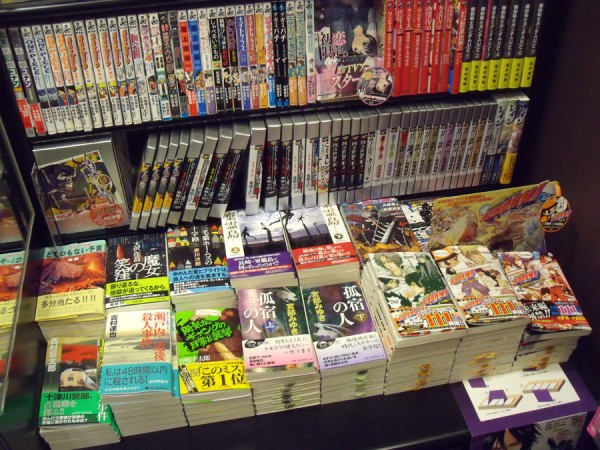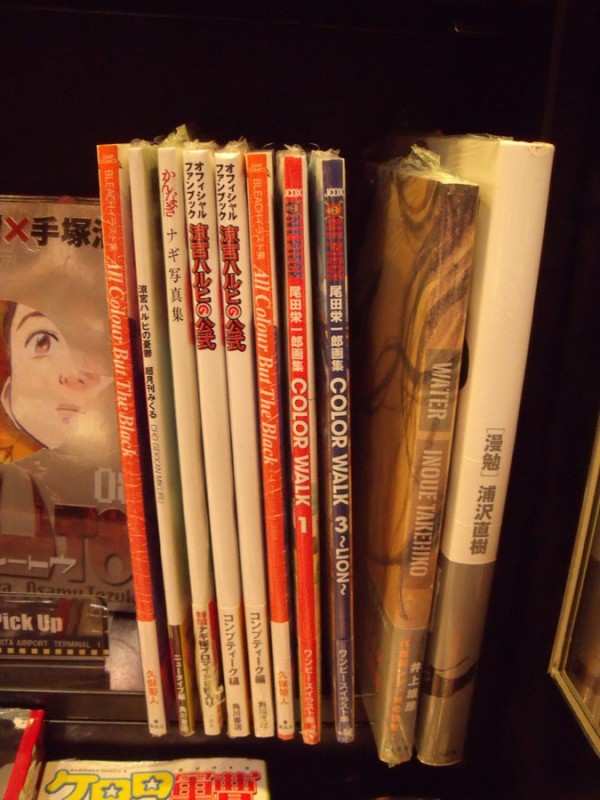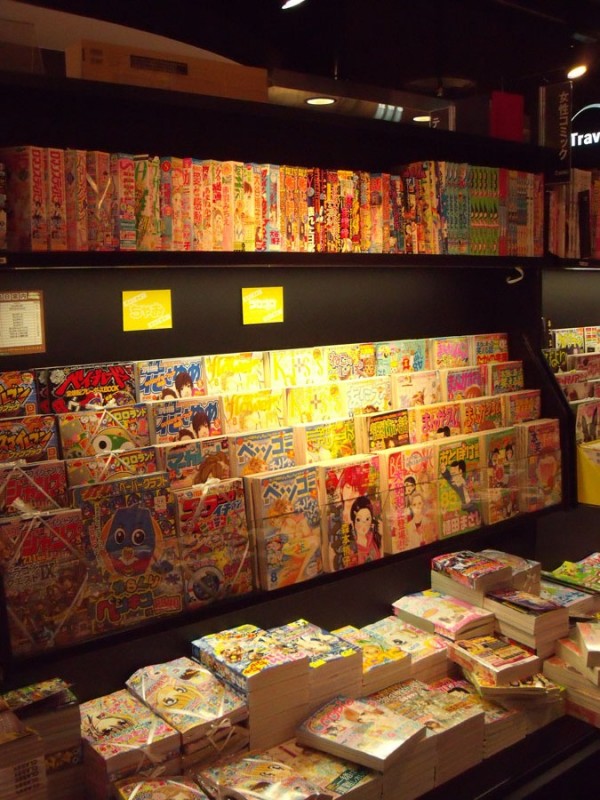I have strong feelings on Comics Journalism.
Those strong feelings are part of the reason why I rarely participate in comics journalism or the discussion thereof anymore. The other part is that I have moved, with the creation of TCAF and my general… being-around-ness… from a commentator to a content producer. Tearing into a comics journalist or journalism site, while often necessary and frankly personally rewarding now has the added bonus of blowing back onto creators, stores, and organizations I work with. Big picture, there’s not much to be gained. So it was probably ill-advised that today, when creator Jess Fink started complaining about the superhero-centric focus of most comics websites (at the expense of every other kind of comic being created), I offered my 2 cents.
My thesis? The reason “comic” sites write more about superheroes is that those stories get more views. Most of the bigger comic websites are advertising driven, and there’s just not a ton of money out there in mid-sized ad-driven websites. Every unique visitor counts. Every pageview counts. And, flat-out, there are more people interested in superheroes, on average, than there are literary comics, or even non-superhero genre work. I personally believe that there is a possibility for a greater segment of the population to enjoy literary and general fiction than genre fiction, but the numbers right now say otherwise. Simple economics, most literary comics are stand-alone graphic novels that print what, 4k-10k for the midlist to moderate hits? That’s respectable, that’ll make the publisher and the creator money. But an average superhero book from DC or Marvel is doing 20k-30k, which is already 2x to 6x more, and it’s doing that every month. To say nothing of the filthy pirates who don’t pay for comics. It’s just more eyeballs.
And when you add superhero movies to the mix, or the possibility of superhero movies, that draws in an even bigger section of the general public–“people who see movies.” It’s a bit like what Patton Oswald was talking about, the mainstreaming of nerd culture. It’s the steady mainstreaming of nerd websites to make them palatable and interesting to general audiences–for the huge pageviews, and the advertising dollar that goes with them.
How much hype did Scott Pilgrim get for that last book? How much did it get for the first 2 or 3 books? Did the media attention for volumes 5 and 6, the attendant interviews with O’Malley, profiles, background articles, all of that, did it numerically outweigh all of the press that every other Oni book combined got in the year 2008? Or 2007 and 2008 combined maybe? That’s the game. Sure it sucks to be Cory Casoni at Oni Press fielding 450 press requests in 8 months for one book when you’ve got 65 other releases to promote and media cannot even hear you when you pitch them unless “that guy, you know, Scott Pilgrim, unless we can get him to talk about the other books that you publish and he says which ones would also make good movies.” Sucks but that’s the game.
Smart PR people at literary comics publishers, or independent genre publishers (Cory Casoni of Oni Press included) can and do place stories all the time though. When you’ve got a book with a good angle, or you’ve got a movie deal, or you’ve got the prospect of a movie deal, or you’re just really f’ing persistant, you can get the corporate comics sites to pay attention. It particularly helps if it’s a genre fiction book–zombies, crime, sci-fi, military, whatever happens to be most popular at the time. Those stories are great, but they generally get considerably less commentary, less attention, and fewer page views than say… speculating on the cast of the possible Ant-Man movie. That’s why (generally) you’re not going to see much at those sites that isn’t specifically designed for the big audience. It’s gotta be the favourite of an individual writer working there or something similar. Ultimately the people working at these sites get paid by ad revenue, and the articles that get the most views are the ones that generate that revenue, and those are generally superheroes, or superhero movies, or according to Bleeding Cool, superhero porn movies (Batporn #1 article 18 weeks running).
And I Mean This: Not that there’s anything wrong with that. At least, not specific to comics, the comics industry, or comics journalism.
Because lets face it: Corporate journalism on the whole is kind of sliding into the abyss, isn’t it? As above so below; ratings equal ad dollars equals a capitalist society, and so CNN runs stories on celebrity pets or whatever nonsense will keep them from sliding into total obscurity, while Fox News just out and out lies to people, every day, demonstrably filling them full of fear making them terrified to turn off the TV, and man, that’s how you score the big ad dollars! Make people afraid to turn the channel.
So who gives a fuck if corporate comic news site ‘a’ is mostly concerned with the recent developments of the green lantern or the wolverine? I don’t buy the argument that they’re ‘supposed’ to be concerned with anything in particular besides making sure the lights stay on. And really, there are so many much larger, much more pervasive, and more damaging problems facing comics as an industry than books I personally like getting less media attention than books I do not care for. Sure, it’s all tied together, distribution, fair contracts, and the attention a book or creator receives, but one of those things is the weak link in the importance chain.
No, corporate sites have a corporate responsibility to sell, and the masses seem to be most engaged by things I’m not that into, and so those sites pretty-much disappear off my radar. I actually feel good for not knowing how much people hated JMS’ Superman “grounded” stories until it popped up in the year-end-reviews on sites I do read. I feel like a good person for not having known that. I am glad that the few comics news sites in my feed reader–ComicsReporter.com, Robot 6, The Beat, PW Comics Week–do not generally bother me with the 3-5 press releases that Marvel send daily (seriously) that I get in my inbox anyway, informing me that NOTHING WILL EVER BE THE SAME (got that one twice last year) and that THE ONLY PLACE TO GO FOR MARVEL COMICS IS MARVEL.COM TO DOWNLOAD THEM (that one was my favourite). Thanks, guys and gals.
And if you’re like, a douche, who wants to pull one sentence out of context in order to hammer me with some imaginary straw-man argument, let me save you the trouble: I know I’m biased, I know I’m not being particularly fair to people who want to earn a paycheck and/or parlay their interview with a creator into working at the same company as that creator. I’m not cut out for producing regular content day in and day out, I totally couldn’t hack the comics journalism game and pay my rent. BY ALL MEANS feel free to write me off. But I’ve been watching internet comics journalism since Newsarama was just a dude on Usenet, and I didn’t much like him, so I feel like I’ve got enough time and experience invested despite my biases (and failings). Hell, because of them.
Ultimately what it comes down to is, the content I find disappointing and weak and shallow is the stuff that attracts the biggest audience of crazy people in the comments section arguing about how shallow it is, and every comment is worth actual money to those sites. I’d like to do something about it, contribute more blogging, more reviews, more journalism, but I did 3 dozen interviews, thousands of blog posts, and wrote a book over the last 10 years, and I think for the time being I’d rather curate comic shows and sell good books and help out individual creators and publishers I like. Only so many hours in the day.
So, yeah, Comics Journalism isn’t what I want it to be, but luckily that is someone else’s problem. If that’s you: Good luck!
– Christopher
P.S.: The solution is for writers to find a balance not only between “what sells” and “what they love”, but in representing the entire medium in new ways. If everyone is covering every Marvel and DC press release, then no one is building a loyal audience. If you’re covering those press releases and sneaking an article about Moto Hagio’s revolutionary speculative fiction in shoujo comics of the 1960s or Jim Ottavianni’s new Richard Feynman biography from First Second onto IO9.com, then you’re going to hook someone at your site who’s going to stay for the long haul because you’ve offered content that no one else has. My 2 cents.















